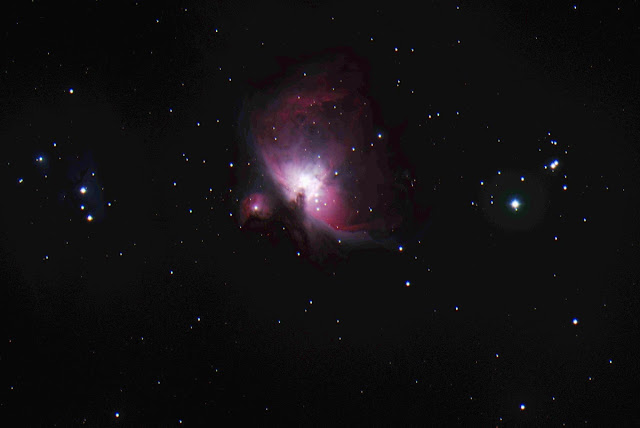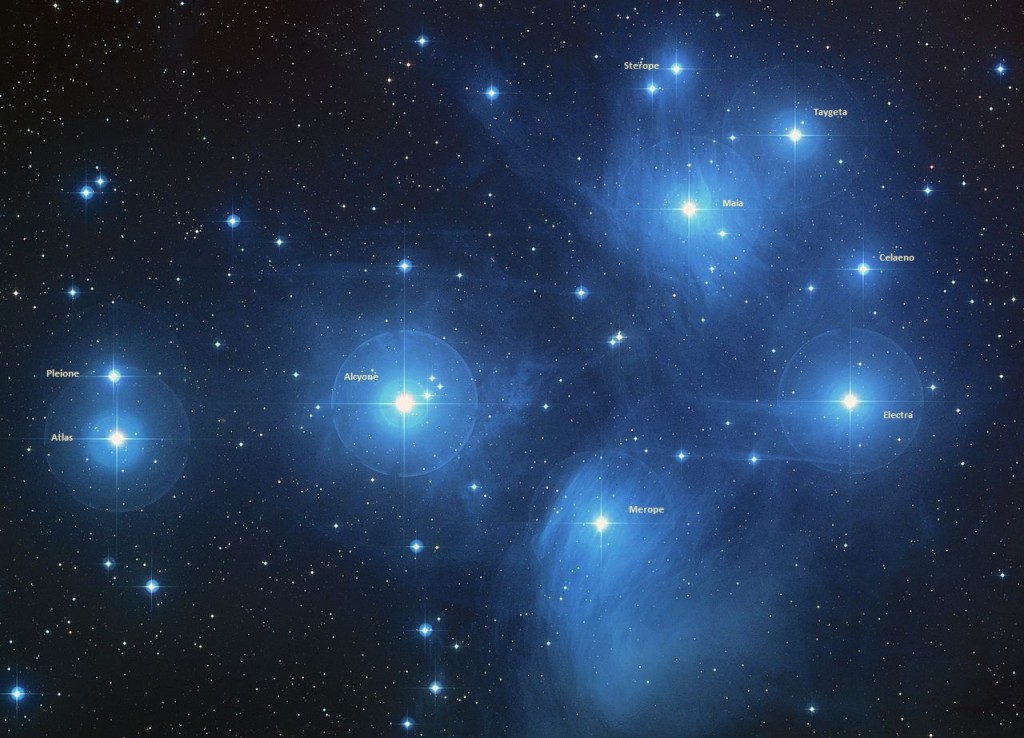Messier Marathon by Remote Telescopes (M40-M49)
梅西耶 馬拉松 之 遠端天文台 版本
Messier marathon is an attempt, usually organized by amateur astronomers, to find as many Messier objects as possible during one night. The Messier catalogue was compiled by French astronomer Charles Messier during the late 18th century and consists of 110 relatively bright deep-sky objects (galaxies, nebulae, and star clusters).
梅西耶 馬拉松 ( Messier Marathon ) 是在一夜內尋找到儘可能多,或儘可能完成全部110個梅西耶天體的活動。
https://zh.wikipedia.org/zh-tw/%E6%A2%85%E8%A5%BF%E7%88%BE%E9%A6%AC%E6%8B%89%E6%9D%BE
梅西耶目錄 是法國天文學家梅西耶在18世紀編輯的,總共有110個相對較明亮的深空天體(星系、星雲和星團)。
https://zh.wikipedia.org/wiki/%E6%A2%85%E8%A5%BF%E8%80%B6%E5%A4%A9%E4%BD%93%E5%88%97%E8%A1%A8
https://zh.wikipedia.org/wiki/%E6%A2%85%E8%A5%BF%E8%80%B6%E5%A4%A9%E9%AB%94
網路上的 遠端天文台,裡面設置 天文望遠鏡, 可以用網路遠端控制,做 天文攝影。
這種方案已經發展多年了,各種功能與介面也越來越純熟了。
遙控望遠鏡(遠端天文台) ( 草山星空 )
https://astrotracer.blogspot.com/2016/07/itelescope.html
我個人因為工作忙碌勞累,不容易參加實體的梅西耶馬拉松,於是就興起一個興趣,想用遠端天文台來拍攝梅西耶深空天體,希望可以在一年,或三年內完成全部110個梅西耶天體。
想稱之為:
梅西耶 馬拉松 之 遠端天文台 版本
預計使用 iTelescope 與 Telescope Live
** CCD 的 LRBG 或 HSO 原始影像 使用 DDS (2020年) 或 CCDStack 疊合 (2023年)
Messier Marathon by Remote Telescopes
Messier Marathon by Remote Telescopes (M1-M9)
Messier Marathon by Remote Telescopes (M10-M19)
Messier Marathon by Remote Telescopes (M20-M29)
Messier Marathon by Remote Telescopes (M30-M39)
Messier Marathon by Remote Telescopes (M40-M49)
Messier Marathon by Remote Telescopes (M50-M59)
Messier Marathon by Remote Telescopes (M60-M69)
Messier Marathon by Remote Telescopes (M70-M79)
Messier Marathon by Remote Telescopes (M80-M89)
Messier Marathon by Remote Telescopes (M90-M99)
Messier Marathon by Remote Telescopes (M100-M110)
Extra:
NGC Omega Centauri, and other Objects ( Omega Centauri NGC )
IC, Barnard, Sh2, Caldwell etc
Astrophotography by Web Remote Telescopes 網路天文攝影 初體驗 (再體驗) + 觀測紀錄
M40 ( )
M41 ( 疏散星團 )
https://en.wikipedia.org/wiki/Messier_41
2023-03-21 iTelescope T69 color ( 北方在右邊 ) ( North at Right )
color 150 sec 彩色 2.5分鐘 150秒
T69
M42 獵戶座大星雲 (Orion Nebula) ( M42 - M43 )
M42 - M43
https://en.wikipedia.org/wiki/Orion_Nebula
The Orion Nebula (also known as Messier 42, M42, or NGC 1976) is a diffuse nebula situated in the Milky Way, being south of Orion's Belt in the constellation of Orion, [b] and is known as the middle "star" in the "sword" of Orion. It is one of the brightest nebulae and is visible to the naked eye in the night sky with apparent magnitude 4.0. It is 1,344 ± 20 light-years (412.1 ± 6.1 pc) away[3][6] and is the closest region of massive star formation to Earth. The M42 nebula is estimated to be 24 light-years across (so its apparent size from Earth is approximately 1 degree). It has a mass of about 2,000 times that of the Sun. Older texts frequently refer to the Orion Nebula as the Great Nebula in Orion or the Great Orion Nebula.
https://zh.wikipedia.org/zh-tw/%E7%8C%8E%E6%88%B7%E5%BA%A7%E5%A4%A7%E6%98%9F%E4%BA%91
獵戶座大星雲(M42,NGC 1976)是一個位於銀河系的瀰漫星雲,在天空中坐落在獵戶座的獵戶腰帶位置[b],作為獵戶之劍的中心。獵戶座大星雲是亮度最高的星雲之一,在夜空中裸眼可見,視星等為4.0。星雲距離地球1,344正負20光年(412.1正負6.1秒差距)[4][5],是最接近地球的一個恆星形成區。星雲寬度約24光年,因此從地球觀察其寬度約為1度。它的質量約為太陽的2,000倍。
長久以來,獵戶座大星雲都是夜空中倍受關注的拍攝對象,並且它也得到了天文學家們的廣泛研究。[6]對此星雲的研究可揭示出恆星和行星系統的形成過程:星雲中的氣體和塵埃因引力坍縮,並最終演變為星體。近年天文學家已直接觀測到該星雲四合星附近的原行星盤、棕矮星、激烈的氣體湍流,以及附近大量出現的光電離恆星。
SPA-1-CCD RGB 180 sec 2020-10-14
Crop 裁切
SPA-1-CCD ( Takahashi FSQ-106ED 這支 天文望遠鏡 報價大約新台幣 16萬元 )
SPA-1-CCD LRGB 180 sec x2 Imaging: 2020-10-14, Re-processing: 2023-06-01
M44 ( Beehive Cluster) ( 疏散星團 )
https://en.wikipedia.org/wiki/Beehive_Cluster
The Beehive Cluster (also known as Praesepe (Latin for "manger" or "crib"), M44, NGC 2632, or Cr 189), is an open cluster in the constellation Cancer. One of the nearest open clusters to Earth, it contains a larger population of stars than other nearby bright open clusters holding around 1,000 stars. Under dark skies, the Beehive Cluster looks like a small nebulous object to the naked eye, and has been known since ancient times. Classical astronomer Ptolemy described it as a "nebulous mass in the breast of Cancer". It was among the first objects that Galileo studied with his telescope.
https://zh.wikipedia.org/zh-tw/%E9%AC%BC%E5%AE%BF%E6%98%9F%E5%9C%98
鬼星團,也稱為蜂巢星團(拉丁文是"Praesepe")、M44、NGC 2632或Cr 189,是位於巨蟹座的一個疏散星團。它是最靠近太陽系的疏散星團之一,並且有著比其它鄰近疏散星團更多的恆星。在黑暗的夜空下,裸眼看見的鬼宿星團像是一個模糊的斑塊,因此在遠古時代就有紀載,中國稱他為積屍氣。古代的天文學家托勒密描述他是"巨蟹胸部的集團",並且是伽利略用望遠鏡研究的第一批天體之一 [2]。
2023-04-05 iTelescope T20 LRGB
RGB 120 sec x 3 用 CCDstack 疊合 RGB 各 120秒拍的影像,各 3 組疊合
T20
2023-04-12 Telescope Live RGB 300 sec x 4
SPA-3
MARS, M44 AND CLOUDS
https://skyandtelescope.org/online-gallery/mars-m44-and-clouds/
Mars sails through M44 - The Beehive Cluster
https://freestarcharts.com/mars-sails-through-m44-the-beehive-cluster
M45 ( Pleiades ) 昴宿星團(又稱,七姊妹星團)
https://en.wikipedia.org/wiki/Pleiades
The Pleiades (/ˈpliː.ədiːz, ˈpleɪ-, ˈplaɪ-/),[7][8] also known as The Seven Sisters, Messier 45 and other names by different cultures, is an asterism and an open star cluster containing middle-aged, hot B-type stars in the north-west of the constellation Taurus. At a distance of about 444 light years, it is among the nearest star clusters to Earth. It is the nearest Messier object to Earth, and is the most obvious cluster to the naked eye in the night sky. It is also observed to house the reflection nebula NGC 1432, an HII region.
Messier 45: Pleiades
https://www.messier-objects.com/messier-45-pleiades/
https://zh.wikipedia.org/zh-tw/%E6%98%B4%E5%AE%BF%E6%98%9F%E5%9C%98
昴宿星團[4][5],簡稱昴星團,又稱七姊妹星團,梅西耶星雲星團表編號M45,是一個大而明亮的疏散星團,位於金牛座,裸眼就可以輕易看見,肉眼通常見到有九顆亮星。昴星團的視直徑約2°,形成斗狀。成員星數在200個以上,是一個很年輕的星團。昴星團也是一個移動星群。
日文為 Subaru
https://zh.wikipedia.org/zh-tw/%E6%98%B4%E5%AE%BF%E6%98%9F%E5%9C%98
2023-03-20 iTelescope T68 color 120 sec ( 北方在右邊 ) ( North at Right )
( 拍攝時 天空應該有薄雲,所以星點相當暈開了)
Telescope Live SPA-1 Imaging: 2021-12-07, Processing: 2023-04-16
RGB 600 sec x 2
SPA-1Alcyone & Merope CHI-1 RGB 180 sec x 8 Imaging: 2023-01-16, Processing: 2023-04-16
M48 ( Beehive Cluster) ( 疏散星團 )
https://en.wikipedia.org/wiki/Messier_48
Messier 48 or M48, also known as NGC 2548, is an open cluster of stars in the equatorial constellation of Hydra. It sits near Hydra's westernmost limit with Monoceros,[7] about 18° 34′ to the east and slightly south of Hydra's brightest star, Alphard.[8] This grouping was discovered by Charles Messier in 1771
https://zh.wikipedia.org/zh-tw/M48
M48或梅西耶48,也以NGC 2548為人所知,是位於天球赤道上的星座,長蛇座的一個疏散星團。它位於長蛇座最西端的邊界附近,靠近麒麟座[6],位於長蛇座最亮的星宿一東方偏南,角距離18° 34′[7]。這個星團是梅西耶在1771年發現的
2023-06-01 iTelescope T10 LRGB
iTelescope T10 LRGB 120 sec x 2 疊合 RGB 各 120秒拍的影像,各 2 組疊合
T102023-04-08
2023-06-03
































沒有留言:
張貼留言